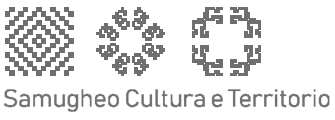Folklore and Traditions in Samugheo
There are lots of folklore events that bring the streets of Samugheo to life during the year.
Every event has its own distinctive elements, such as the ultra-colourful, prestigious local costumes for both men and women, and the Mamutzones masks who, with their dances, re-enact the myths and rituals of central Sardinian pastoral culture
Carnival
Out of the many traditions in Samugheo, special mention should go to its famous Carnival, where the main characters include:

- Is Mamutzones who, while moving and jumping about like a herd of goats, create a rhythmic sound with their bells and cow bells. They are covered in goatskin and have long horns on tall headdresses made of cork. Their bodies are covered in bells and their faces are blackened with soot. Their slow, disorderly pace imitates the movements of battling billy goats during the mating season.
It may even occur that is mamutzones remove their headdresses, which are known as casiddu, and set them out next to one another, dancing around them in a ring. - S’urtzu, half man and half goat, proceeds with a limping gait, dancing awkwardly and often throwing himself on the bystanders. He rolls into puddles, gets up again, and shakes himself off, bleating. Harassed by su ‘omadore, s’urtzu falls down, miming death, while the ground around is coloured in red – it is just a stage trick, created using a bag of blood and water, concealed under his clothes, ready to burst when hit. S’urtzu, brought back to life by being prodded by su ‘omadore, falls back down, surrounded by a swarm of mamutzones who enthusiastically dance around him, as if possessed by the god.
- Su ‘omadore who has the task of limiting the excesses by s’urzu, beating him until he bleeds and prodding him until he reawakens.
- The public isin awe of the athletic skills of s’urzu , who climbs, falls and throws himself on the bystanders, trying to drag them to the ground, involving them in his fate.
It is impossible not to capture echoes of the archaic mysteries of Minoan and Anatolian traditions as well as of the Eleusinian, Orphic and Dionysian cults in this cruel, feral ritual. It also includes elements from the cult of Mithras – probably taken from Roman syncretism and embedded in the native substratum of protohistoric Sardinia. We cannot ignore the salvific value of death and rebirth, which, if we look at it, is not even too remote from Christianity.
Visiting the parade is therefore a rare occasion to immerse yourself in humanity’s ancestral past, when the confines between sacred and profane were more blurred. However, unlike the sacrifice of S’urtzu, the carnival is a happy occasion and the masks in Samugheo will begin to come out for the feast of Sant’Antonio Abate, called into the town square by the sound of a horn, ready to parade through the streets. The celebrations continue until the first rituals of Lent, adding noise and feasting on zeppole pastries and wine to the austere liturgy preceding Easter.

